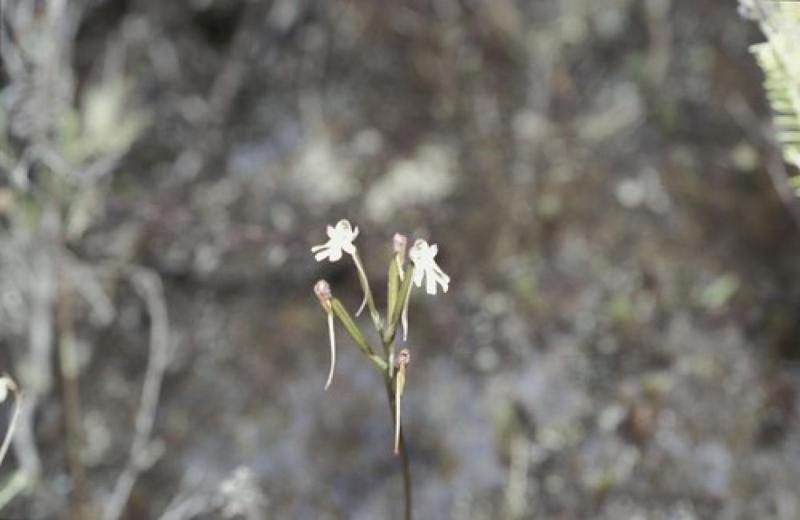Cynorkis fastigiata
Also known as: In Madagascar or Orchis triphylla Cynorkis triphylla Cynorkis fastigiata var. laggiarae Cynorkis fastigiata var. diplorhyncha Cynorkis fastigiata var. triphylla Cynorkis fastigiata var. hygrophila Cynorkis fastigiata var. fastigiata Cynorkis isocynis Cynorkis laggiarae Cynorkis fastigiata var. ambatensis Cynorkis diplorhyncha Cynorkis decolorata Cynorkis hygrophila Habenaria cynosorchidacea Cynorkis fastigiata var. decolorata Cynorkis obcordata Orchis obcordata Gymnadenia triphylla in the subfamily: Orchidoideae
Native to: Madagascar Mauritius
General Information
In Madagascar is a small to medium sized sympodial cool to warm growing terrestrial orchid belonging to the sub family Orchidoideae native to Madagascar and Mauritius.
Plant Description
Sympodial. Grows to 10-30cm. Each new growth has numerous erect lance shaped leaves that grow to 0.7-20cm long
Substrate(s)
- Coarse
- Spaghnum Moss
- Sand
Care Notes
These orchids live on the forest floor, often in dead leaves or humus, yet still have the organs that would allow them to store water given unpredictable or intermittent weather conditions. They require some moisture to always be present in the soil, but not much. Water when the soil approaches dryness and don't let it dry out completely. Some growers place pots in saucers to retain water, but this may create an environment that is too wet, leading to rot.
In most areas these can be grown in the garden under trees or in sheltered locations, as long as they are reasonably protected from huge weather swings, excessive heat, and frost.
Climate
Grows at low to high elevations. Rainfall ranges from 99mm to 452mm per day, heaviest in September and lightest in April. Humidity ranges from 81% to 86%, highest in September and lowest in April. Temperature ranges from 13C to 26C, highest in July (19C to 26C) and lowest in February (13C to 19C).
Watering
These orchids prefer a wet-dry cycle between waterings, they should be watered frequently but only when the moisture is approaching dryness, where the pot feels light and/or the media looks dry. Keep an eye on mounted orchids in warm weather as they may dehydrate quickly.
Fertiliser
dormant-medium-demand-orchid Use balanced fertiliser during Spring and Summer. Apply fertiliser regularly at half strength year round. Use a high Nitrogen fertiliser during Spring and Summer. Use a high Phosphorous fertiliser during Summer.
Potting
These plants can be sensitive to repotting though should not require repotting regularly. Repotting should be done when the mix has broken down to the point that it doesn't absorb water or holds onto water for far too long, usually the plant shows a decline in growth as well. Repotting is best done after the growing season when the plant has died back.
The mix should be free draining, with a blend of 30% inorganic ingredients such as coarse sand, gravel or perlite, mixed in with about 70% organic ingredients such as peat, leaf litter or decomposed bark. Avoid commercial potting mixes as they can vary wildly and may contain "wetting agents" that can hold onto water for loo long, causing rotting and stunted growth.
Repotting is best done annually.







